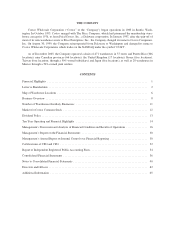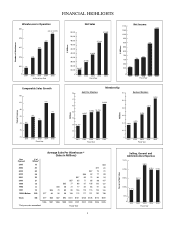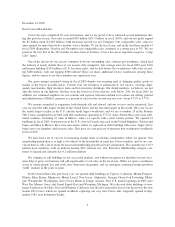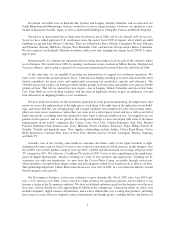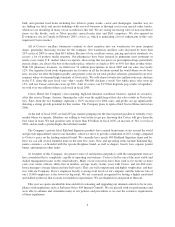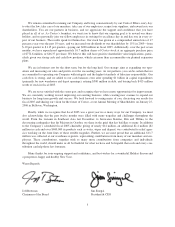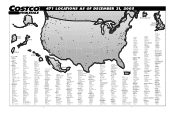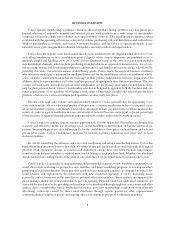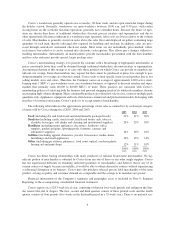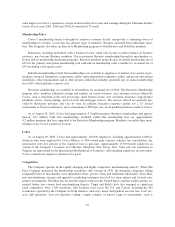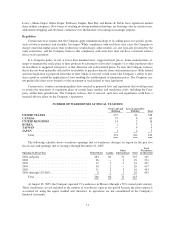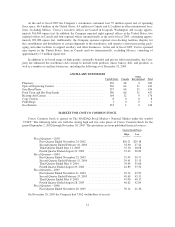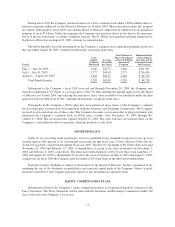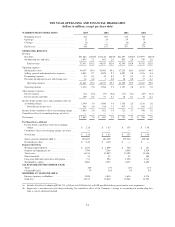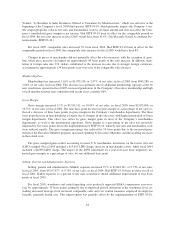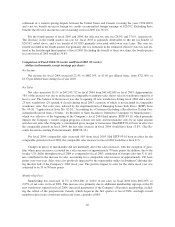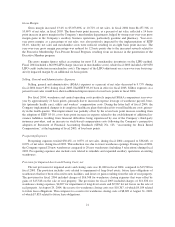Costco 2005 Annual Report Download - page 12
Download and view the complete annual report
Please find page 12 of the 2005 Costco annual report below. You can navigate through the pages in the report by either clicking on the pages listed below, or by using the keyword search tool below to find specific information within the annual report.
Lowe’s, Home Depot, Office Depot, PetSmart, Staples, Best Buy and Barnes & Noble, have significant market
share in their categories. New forms of retailing involving modern technology are boosting sales in certain stores,
while home shopping and electronic commerce over the Internet is becoming increasingly popular.
Regulation
Certain state laws require that the Company apply minimum markups to its selling prices for specific goods,
such as tobacco products and alcoholic beverages. While compliance with such laws may cause the Company to
charge somewhat higher prices than it otherwise would charge, other retailers are also typically governed by the
same restrictions, and the Company believes that compliance with such laws does not have a material adverse
effect on its operations.
It is Company policy to sell at lower than manufacturers’ suggested retail prices. Some manufacturers at-
tempt to maintain the resale price of their products by refusing to sell to the Company or to other purchasers that
do not adhere to suggested retail prices or that otherwise sell at discounted prices. To date, the Company believes
that it has not been materially affected by its inability to purchase directly from such manufacturers. Both federal
and state legislation is proposed from time to time which, if enacted, would restrict the Company’s ability to pur-
chase goods or extend the application of laws enabling the establishment of minimum prices. The Company can-
not predict the effect on its business of the enactment of such federal or state legislation.
Certain states, counties and municipalities have enacted or proposed laws and regulations that would prevent
or restrict the operations or expansion plans of certain large retailers and warehouse clubs, including the Com-
pany, within their jurisdictions. The Company believes that, if enacted, such laws and regulations could have a
material adverse effect on the Company’s operations.
NUMBER OF WAREHOUSES AT FISCAL YEAR END
Own Land and
Building
Lease Land and/or
Building Total
UNITED STATES .......................................... 257 81 338
CANADA ................................................. 57 8 65
UNITED KINGDOM ....................................... 14 2 16
KOREA .................................................. 2 3 5
TAIWAN ................................................. — 4 4
JAPAN ................................................... 1 4 5
Total ................................................. 331 102 433
The following schedule shows warehouse openings (net of warehouse closings) by region for the past five
fiscal years and openings (net of closings) through December 31, 2005:
Openings by Fiscal Year United States Canada
Other
International Total
Total
Warehouses
in Operation
2001 and prior ................................. 264 60 21 345 345
2002 ......................................... 26 — 3 29 374
2003 ......................................... 19 1 3 23 397
2004 ......................................... 18 2 — 20 417
2005 ......................................... 11 2 3 16 433
2006 (through 12/31/05) ......................... 8 1 1 10 443
Total..................................... 346 66 31 443
At August 28, 2005, the Company operated 27 warehouses in Mexico (through a 50%-owned joint venture).
These warehouses are not included in the number of warehouses open in any period because the joint venture is
accounted for using the equity method and, therefore, its operations are not consolidated in the Company’s
financial statements.
11


